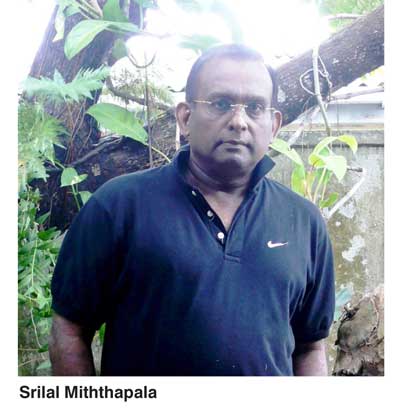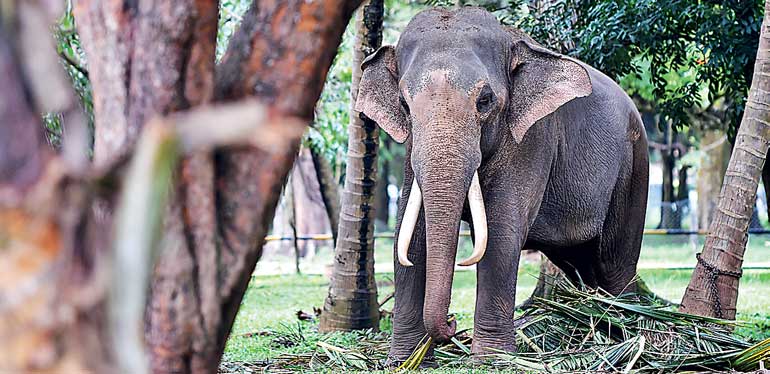
Sri Lanka to shift farmers from elephant corridors
Sri Lanka today announced it was planning to relocate farmers living on the edges of forests inhabited by elephants to reduce the numbers killed on both sides.
Wildlife minister Gamini Jayawickrama Perera said the island’s elephant population had dropped to 6,000, from 7,379 counted five years ago, as deadly encounters between animals and humans increase.
“Although various measures like erecting of electric fences were taken to prevent human-elephant conflicts, so far this has not been resolved,” Perera said in a statement.
“Steps are being taken to resolve the issue by relocating the inhabitants in identified elephant migratory pathways.”
He did not say how many farmers would be relocated in 18 affected districts out of the island’s total of 25. But elephant expert Jayantha Jayewardene said he believed thousands were encroaching on elephant habitats and moving them would be a challenge.
“Sri Lankan elephants usually don’t migrate from one area to another, but what has happened is that thousands of farmers have encroached and split the traditional habitat of elephants.
“This means frequent clashes and we need a much more thought out plan to deal with the problem,” Jayewardene told AFP. “Evicting thousands of people will not be easy. One thing is sure, more elephants than people get killed in this battle.”
Elephants are considered sacred animals in Sri Lanka and killing them is a criminal offence, punishable by death.
But officials said there had been a rapid expansion of farms near wildlife parks, shrinking elephant habitats and causing frequent clashes between the two.
Official figures show 270 people and 942 elephants were killed in such encounters across the country over four years to 2014. Some 5,095 homes were damaged during the same period.
Wild elephants were also killed after being hit by trains and due to floods and lightening strikes. Female elephants are known to have been killed so that their babies can be snatched and kept as pets.
Owning a baby elephant is a status symbol in Sri Lanka although authorities recently began a crackdown against the trend.
Source : 15/09/2016 Business standard http://www.business-standard.com/article/pti-stories/sri-lanka-to-shift-farmers-from-elephant-corridors-116091400954_1.html
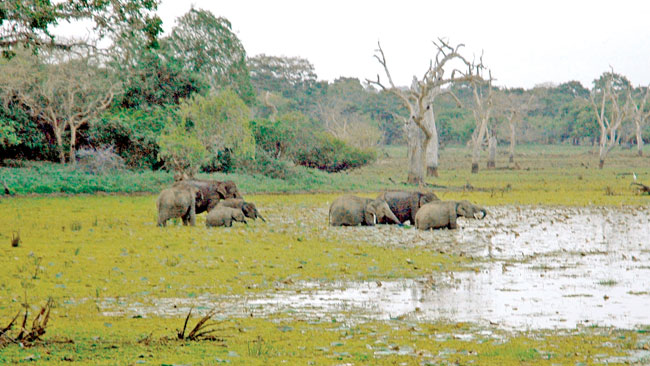
Wildlife Act to be amended
Sustainable Development and Wildlife Minister Gamini Jayawickrama Perera said that steps are being taken to amend the Wildlife Act of 1932 to fall in line with the changing times.
A committee has been appointed to amend the present Wildlife Act which is over 80 years old and make suitable recommendations, the Minister told the Sunday Observer yesterday.
“We have to look into international agreements and the Convention on International Trade in Endangered Species of Wild Fauna and Flora (CITES) when effecting amendments to the Act. We have to abide by the international law on endangered species,” he said. The CITES is an international agreement between Governments to ensure that international trade in specimens of wild animals and plants do not threaten their survival. This year, the CITES Conference will be held in South Africa from September 24 to October 5.
“Our biggest problem is that the Wildlife Ministry was corrupt in the past. Various complaints had been made against the officials by politicians and they became helpless. Some of them had got into trouble as a result of various Commission Reports,” the Minister said.
According to the Minister, the number of tourist arrivals in the country would be around 2.5 million by the end of this year. Sri Lanka had recorded 1.8 million tourist arrivals last year. In 2015, the Wildlife Ministry had remitted Rs. 3,500 million to Government coffers. At present, the Ministry is faced with a shortage of approximately 1,500 workers including the marine sector.
“I have submitted a Cabinet paper in this regard. We can’t run national parks without an adequate number of workers.
For example, if we take Minneriya National Park, it has only 12 trackers while its daily income exceeds Rs. 3 million. Nearly 300 vehicles visit Minneriya daily. The situation in Yala and other National Parks is more or less the same,” he said. The Minister said that the Wildlife Ministry generates an income of Rs. 22 million per day and that this will exceed Rs. 25 million by end of this year.
Source : 11/09/2016 Sunday Observer http://www.sundayobserver.lk/2016/09/11/new17.asp
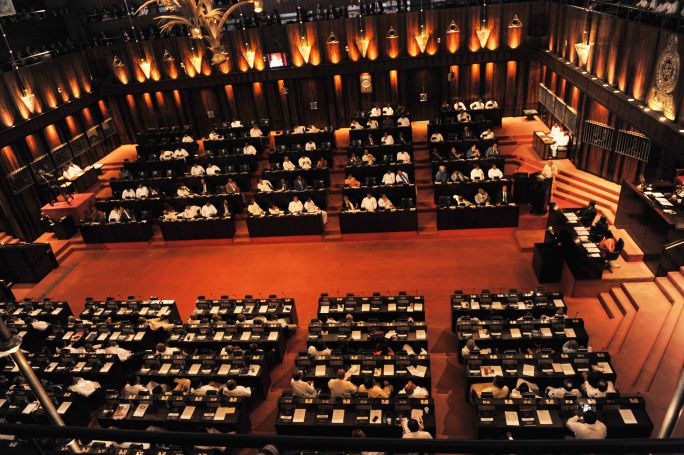
Sri Lanka focusing on Green Sustainable Development
Sri Lanka is focusing on green sustainable development as envisaged in the Maithri Palanayak Election Manifesto, said Prime Minister Ranil Wickremesinghe in Parliament yesterday.
He said the government had already approved a Sustainable Development Council Bill and the same has been referred to Provincial Councils for their observations. He added that following their observations, the government could debate on it and pass the bill in Parliament, adding that following the bill being passed, the Sustainable Development Minister could come up with new plans for the future.
He made these observations moving the Ratification of the Paris Agreement on the United Nation’s Framework Convention on Climate Change adopted in New York on May 09, 1992.
He said that he was happy that Parliamentarians take a keen interest on the matter and he should also explain as to why a change in Parliamentary business is needed to bring this forward.
“Global Climate Change has captured our attention during the last few decades. The United Nations adopted the framework at the Convention on Climate Change in 1992. But the problem was that the countries could not agree to the steps to be taken. We can see how long it had taken for global countries to come into an agreement. The problem was that, developed countries did not need to control the emission as they thought their own development process would be affected, Premier Wickremesinghe said. “We are well aware that during the last two centuries, the the industrial revolution, the rapid development of the world economies, the World War 11, use of atomic weapons, the test on nuclear weapons, etc. have made a significant impact on the Global Climate Change. Therefore,concerning the Climate Change, the expected 1.5 to 2 Celsius degree increase is getting exceeded. As I told you earlier, the waters of the Mahaweli river could get affected, while tea cultivation too could be affected. Due to this reason, there had been many meetings held, while last was in Copenhagen which also ended without reaching any agreement despite the efforts made as many countries were looking at their own interest.”
He said that it was possible for a country to develop fast, while controlling its emissions. “We are happy that Europe and Japan took the lead on these matters. However, the Paris Climate Talks last year reached a decision. I won’t say that I was 100 percent satisfied with it, but it was a great leap forward. Now the process of ratification has commenced. For ratification requires fifty five percent of the countries with 55 percent of the global emission to ratify the agreement for it to come into force. Although many countries have agreed to it, there are still issues in some of the western countries and also in some of the Asian development economies. While they agree to control emissions, these are major issues coming up when they face the forthcoming elections in western countries this year and next year,” Premier Wickremesinghe said.
He said in this background, it gave us great encouragement that the President of the United States of America and the President of China agreed to ratify the agreement prior to the G 20 Meeting. “Following it, many countries and parliaments have decided to go ahead to ratify the agreement. Sri Lanka is concerned that President Maithripala Sirisena’s manifesto agreed to take all necessary measures to protect the environment. The President has taken over the Environmental Ministry and had taken many measures to protect the environment. So, we have a great responsibility to ratify this agreement. Sri Lanka has the ambition for rapid development, however it should be a green development.
The government has already approved a Sustainable Development Council Bill. It has been sent to the Provincial Councils. I have asked the Provincial Council Minister to expedite the process so that we could debate it and pass it here. Later, we could take other necessary measures. In this background, we have to ratify it quickly, by ensuring that at least by the time the UN General Assembly meets, there would be ample ratifications at the November meeting this year by the time this agreement would come into force. We had discussed this matter with President Maithripala Sirisena. We felt that Parliament should ratify this agreement before President Maithripala Sirisena’s visit to New York for the General Assembly in November. This is the last week that we could sit before the President’s visit to New York”, Premier Wickremesinghe said. “So we moved this agreement.”
Source :10/09/2016 Daily News http://epaper.dailynews.lk/art.asp?id=2016/09/10/pg10_0&pt=p&h=

Climate change unavoidable, climate summit told
Conference Hall (BMICH) yesterday, he said the world carbon dioxide level reached 450 parts per million (ppm) by March 2015.
The Paris Agreement was adopted by consensus on December 12, 2015 at the 21st Conference of the Parties (COP 21) of the UN Framework Convention on Climate Change (UNFCCC) in Paris. “We were talking about keeping it below 350 ppm. Unless we have an immediate transition in the world economy, which is based on fossil fuel, we are not going to have these types of reductions in the immediate terms,” he said.
“President Maithripala Sirisena had committed to implement the obligations of Paris Agreement in full and the Cabinet has approved the ratifications of the Paris Agreement last week and it will be tabled in Parliament and debated on the same day and approved unanimously in Parliament,” the Minister in Charge of Science, Technology and Research Susil Premajayantha said. “If technology keeps on improving and transfer as agreed in the COP 21, the temperature increase may be more controlled and there would be a better chance of survival,” the Minister further said.
Experts have forecast that even with the Paris Agreement, the global temperature would rise by 3 to 4 degree Celsius by the end of the century, Director of the Centre for Environmental Justice Hemantha Withanage said.
“The climate change is unavoidable and without any measures taken the world temperature may rise eight to ten degrees,” he said. While addressing the first day of the conference of the Paris Agreement on Climate Change and Sri Lanka’s readiness held at the Bandaranaike Memorial International
Source : 08/09/2016 Daily Mirror

Mini hydro power plants; money spinner for few; disaster for nature
Mini hydro power plants are steadily conquering the energy sector in Sri Lanka. Amidst much controversy, private companies, politicians and other influential people have resorted to this new avenue of earning a few more bucks. Even though the drainage pattern of the country is well suited for Small Hydro Power Plants (SHP), with the availability of fast flowing water to generate hydroelectricity centralized in the highlands; not all potential locations are necessarily environmentally viable. According to a research conducted by the Environmental Foundation Limited (EFL) the implementation of such less or unviable projects would lead to the irreversible damage of the environment that has a direct effect on the natural resources and ecosystem services to the communities. The Central hills and their surrounding slopes also contain most of the country’s biodiversity, especially within Protected Areas (PA’s) – areas protected under the legislation of Sri Lanka. These are called ‘NoGo’ areas for mini-hydro power plants. However, the current trend is to ignore these restrictions and establish a weir to get the maximum water flow for power generation neglecting the existing biodiversity. Further, there have been many instances where proposed project locations were shown to lie outside PA’s but lie within the PA in reality.
![]()
The initial Environmental Impact Assessment (EIA) is supposed to be the key document that determines whether the project is acceptable in the grounds of environmental, social and geological impacts and whether the environmental clearance should be granted for the said project. It is one of the principle documents needed for the approval process stipulated by the Sustainable Energy Authority (SEA), which is the main project approving agency for mini hydro power plants.
- “The IEE is not only meant to identify potential environmental, social and geological impacts but also supposed to address hydrological features which may prove the projects’ viability”
However, it fails in its objective of identifying errors and unfeasible projects due to many reasons for which the detailed discourse is timely. Supporting reports and studies for gaining approvals are the most likely to contain inaccurate, false or inadequate information, especially the Initial Environmental Examination (IEE) report. The IEE is not only meant to identify potential environmental, social and geological impacts but also supposed to address hydrological features which may prove the projects’ viability. However, EFL and many other environmentalists have encountered several instances where it was found that the proposed quantity of energy cannot be produced by the river/stream and subsequently jeopardizing the ecological health of the Rivers’ downstream through inadequate provision of the environmental flow.

Quite recently, the Daily Mirror received details about another mini hydro which will be constructed under the supervision of Rivinmo Hydro (Private) Limited, a company run by former Commander of the Sri Lanka Navy, Admiral Wasantha Karannagoda. The project is planned to be constructed within close proximity to Pundalu Oya, which belongs to the Kotmale Divisional Secretariat.
“…another mini hydro will be constructed under the supervision of Rivinmo Hydro (Private) Limited, a company run by former Commander of the Sri Lanka Navy, Admiral Wasantha Karannagoda”
Environmental experts believe that with the construction of mini hydro projects, the biodiversity is facing major threats. People in rural areas thrive on natural resources of water for farming and other purposes while they are an asset during times of drought. With the construction of mini hydro projects, most streams and estuaries would be blocked, affecting the livelihoods of the people. As such villagers in Kumbaloluwa, Madakanda, Niyamgandara, Kosgahapathana, Bogahawela, Katarandana and many other Grama Niladhari divisions use the water from Pundalu Oya for their day-to-day purposes, especially, at times of drought. With the construction of this project, the waterfalls at Egodawela and Wewahena would be affected in addition to several other natural ponds.
Another risk factor is that the location has been identified as an area that is prone to develop landslides.
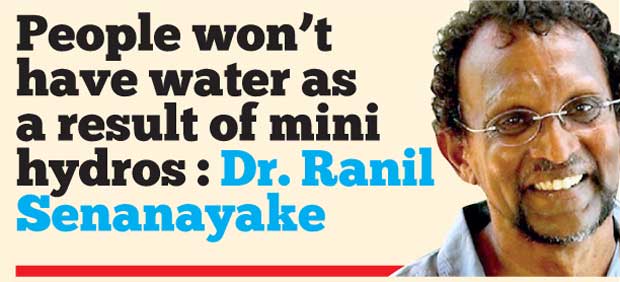
Speaking to the Daily Mirror, Systems Ecologist, Dr. Ranil Senanayake said that mini hydro power plants do have a role to play. “But before they start constructing these they should consider the Downstream Recharge Capacity. But what they do is, they block the water flowing through the stream and send it through a tube. Once the water start going through a tube, the biodiversity is adversely affected. This is an important aspect to consider because they take water from the downstream. Mini hydros do contribute but we could get an equal amount of energy if we developed wind or solar power projects as well. These will not interfere with the flow of water in a stream. We live in an island and we thrive on surface water accumulated from rainfall. If these people keep building mini-hydros ultimately we will not have any water for consumption or for any daily use.”
“Mini hydros do contribute but we could get an equal amount of energy if we develop wind or solar power projects as well”
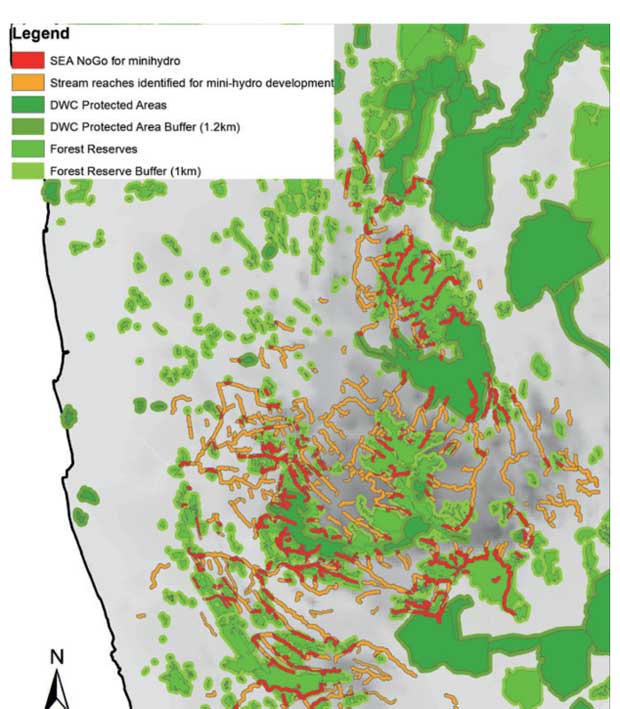

In his comments to the Daily Mirror, Central Environmental Authority (CEA), Director Hemantha Vithanage said that back in 2001 several private companies decided that an IEE would be sufficient to carry out mini hydro projects. “An IEE doesn’t require any public hearing unlike an EIA which is open for the public for a period of 30 days. Within this time, the people in that particular area can voice out their concerns in relation to the proceedings of the project. According to my knowledge, mini hydro projects cause an irreversible damage to the ecosystems in which various species survive.
“According to my knowledge, mini hydro projects cause an irreversible damage to the ecosystems in which various species survive”
We have to protect the endemic species in this country along with other natural resources like the waterfalls. For example there are only two water orchids endemic to Sri Lanka as of now and 19 species of fish. Another problem with these procedures is the fact that these people identify a 3 metre high waterfall as a ‘water drop’. As a result close to 70 locations within close proximity to a waterfall have been identified as sites for these mini hydro plants. As far as I know, there are no studies done about the impact this type of projects would cause to the biodiversity of the country. This has turned out to be a mafia for political bigwigs and private companies. I suggest that these people use alternate methods of providing energy to the national grid either through solar or wind power plants which would be less damaging to the environment as well.”

In an attempt to find more details regarding the impacts of this project, the Daily Mirror spoke to a villager, under condition of anonymity said “They still haven’t started working on the project. However, they have given the proposal suggesting few locations to the CEA but according to my knowledge, these locations had been rejected by the CEA. Many villagers are against this project. Nevertheless, it was alleged that Admiral Karannagoda had promised to build roads and benefits for the villagers in an attempt to proceed with the project. As a resident I believe that a project of this nature would cause great damage to the environment.”


Dr. B.M.S. Batagoda, Ministry of Power and Sustainable Energy Secretary said that mini hydro power plants are one of the best resources that Sri Lanka could ever have. “These projects are definitely beneficial to our country. If not, we would not have any fuel and therefore, we have to rely on wind, solar and hydro power.
Our dream is to become an energy self-sufficient nation. Of course there is a certain amount of environmental damage done during the construction phase. Therefore we have suggested the CEA identifies all sensitive waterfalls and gazette them. Thereafter the remaining waterfalls could be utilized for the projects. The only issue is that people are not working together. Sometimes the developer is trying to find money and there is minimum coordination between the people and the developers. As of now there are around 75 projects which have been approved and I believe that around another 100 more projects will be approved in future.”
Source : 06/09/2016 Daily Mirror //www.dailymirror.lk/115321/Mini-hydro-power-plants-money-spinner-for-few-disaster-for-nature#sthash.HQio0gpB.dpuf
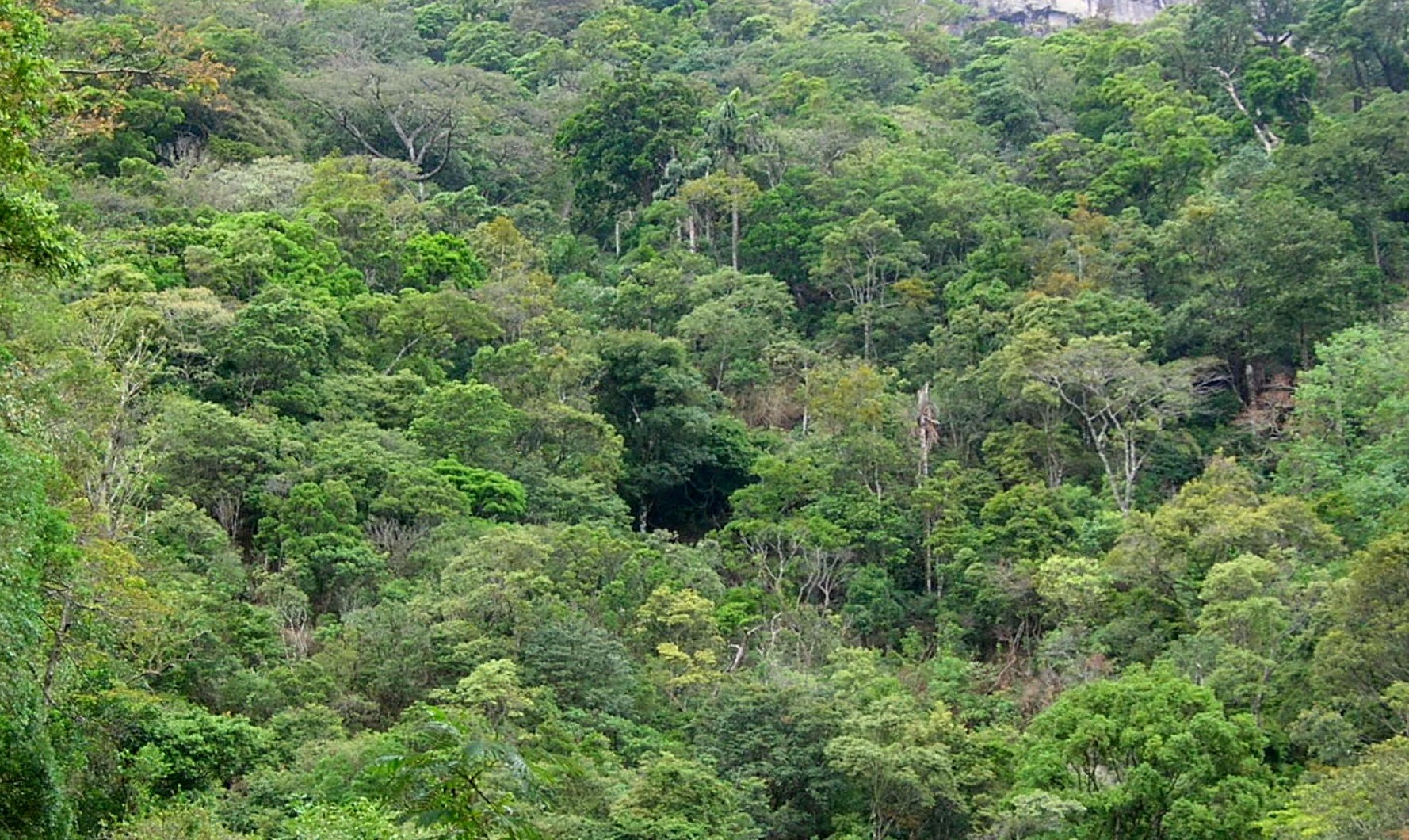
Sri Lanka to protect forests with US$45mn World Bank project
Sri Lanka’s forest and wildlife protection agencies will start project to help communities living near protected habitats to improve livelihoods and make use of natural resources without degrading or over exploiting, the World Bank said.
The World Bank is giving a 45 million dollar credit for a project that wll involve 15,000 residents, 30 percent of them women, living near protected habitats improve their livelihoods and develop income streams such as eco-tourism.
“Sri Lanka is blessed with a rich endowment of eco-systems,” Idah Pswarayi-Riddihough, World Bank Country Director for Sri Lanka and the Maldives said in a statement.
“Striking a fair balance between economy and ecology is crucial, not only for the preservation of the ecosystem but also for helping people emerge from poverty.”
“Managing this natural heritage is the responsibility of all Sri Lankans. Benefits of well managed eco-systems include, improved national economy as well as addressing challenges such as human wild life conflicts and climate change effects.”
Sri Lanka’s government wants to expand forest cover.
The project will also will develop human-elephant co-existence mechanisms and protect watersheds to boost agricultural productivity.
“The project will improve responsible planning and management of protected areas and other biologically and ecologically important locations throughout Sri Lanka,” said Darshani De Silva, Senior Environment Specialist and Project Task Team Leader.
“It will help to create sustained linkages with communities living adjacent to protected areas to ensure participation in protection of critical ecosystems and benefit sharing..”
It will improve the quality of visitor services, and raise revenue potential of forest and wildlife resources.
The capacity of Forest Department and Department of Wildlife Conservation will also be boosted to better carry out their work.
Source : 2016/09/05 Economic Next http://www.economynext.com/Sri_Lanka_to_protect_forests_with_US$45mn_World_Bank_project-3-6036-13.html
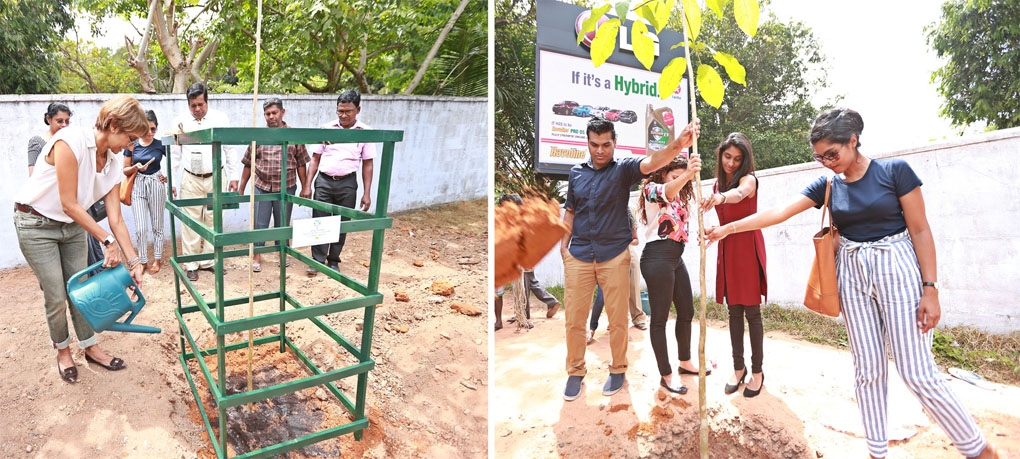
Otara Foundation launches tree planting initiative in Colombo
The Otara Foundation is partnering with the Colombo Municipal Council to increase the tree cover within the city of Colombo with a project to plant 184 trees such as Ehela, Moodilla, Karanda, Kohomba, Takomaria and Kaha-Mara, most of which are native to Sri Lanka.
The project kicked off on Tuesday 30th August with the planting of 20 Tabeuia rosea trees along Cambridge Place Colombo 7.
Among the other streets identified by the CMC to be lined with these trees are Thurstan Road, R. A. De Mel Mawatha (Duplication Road) and Galle Road.
The Otara Foundation said it will bear the cost of the trees and the protective guards around them and will also be donating branded tabards to the 25 CMC workers who will be responsible for the maintenance of the trees.
“Colombo was once much greener than it is today, and had many picturesque tree-lined roads that were cherished by the city’s residents and visitors,” said Ms Otara Gunewardene, founder and Director of the Otara Foundation. “I believe we can make Colombo and indeed Sri Lanka green again. If we each make a firm resolve to guard our trees and forests as well as get involved and plant a few trees even in our own homes or neighbourhoods, we would be doing a great service to Sri Lanka and our future generations. It is important to remember that humans as well as animals need trees for survival, so it is in our best interest to safeguard them and plant more of them. It is heart-breaking to see the rapid destruction that is happening to beautiful Sri Lanka. It is time to protect our precious environment before it is too late.”
Close to 80 per cent of Sri Lanka was under forest cover in the 1900s, but by 2010 this figure had dwindled to below 20 per cent. Sri Lanka’s deforestation rate is now one of the highest in the world with over 1 per cent being lost each year.
Besides helping keep our cities cool, absorbing air pollution and providing shelter and shade, trees produce the oxygen we breathe, help create life-giving rain, reduce erosion, guard against landslides, prevent flooding during heavy rains, produce food for humans as well as animals and are our best weapon against global warming and climate change.
Source : 04/09/2016 Lanka Business News http://www.lankabusinessnews.com/index.php/other/csr-environment/item/4669-otara-foundation-launches-tree-planting-initiative-in-colombo
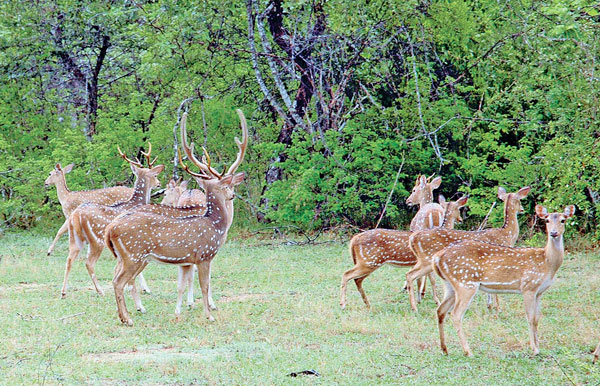
Call of climate change
The focus of the article is to link conservation and access to water to support life and the economy, protecting forests and plants and implementing obligations pertaining to the Paris Climate agreement.
“Climate change has emerged as a key concern for Sri Lanka and its people in the 21st Century. Sea level rise, warming temperatures, uncertain effects on forest and agricultural systems, and increased variability and volatility in weather patterns are expected to have a significant impact in the developing world, where people remain most susceptible to the potential damages and uncertainties inherent in a changing climate.” Source: National Physical Planning Policy and Plan. Sri Lanka 2006-2030 (final draft).
(Pictures by Susantha Wijegunasekara)
Biodiversity and ecosystem services
Sri Lanka has a total land area of 65,610 km2. “Wetlands, both natural and man-made, were the centres of Sri Lanka’s ancient hydraulic civilization and formed the hub of its (Sri Lanka’s) cultural, economic and social evolution. Due to the system of land use adopted in ancient times, catchment areas and other important wetlands in the uplands were preserved under forest cover, while the Dry Zone lowlands were irrigated using water from thousands of rainfed tanks dotted throughout this region. This system of land use served to conserve the biodiversity of natural wetlands. There is also evidence that the conservation of biodiversity in man-made tanks was given consideration in Royal Decrees as early as the 12th Century A.D.” Source: MOFE, 1999.
Here are some examples of ecology and life within. Bees are the most important pollinators of flowering plants including agricultural crops resulting in fruits and seed production. Most of the world’s crops are pollinated by bees comprising more than 20,000 identified species and a similar number of species awaiting identification.
The maritime zone of Sri Lanka is inhabited by 30 species of marine mammals in monsoon scrub jungle in the northwest and southeast, monsoon forest and grassland, inter monsoon forest, rain forests and grasslands below 3000 feet, between 3000-5000 feet and above 5000 feet.
Dry forests, savanna and grasslands are the three major natural terrestrial vegetation types found in the dry land of Sri Lanka.
Four percent of the country’s land area is covered by water (FAO, 2011). Sri Lanka has an extensive network of rivers and streams, most of which arise from the south central massif that rises to 2500 m above sea level. In all, there are 103 distinct natural rivers many of which are perennial, while those in the dry zone are seasonal. Sri Lanka is endowed with a rich array of man-made lakes and canals accounting over 10,000 countrywide, covering more than 127,070 ha, especially in the dry zone.
Sri Lanka harbours over 370 aquatic or wetland plant species of which 12% are endemic to the country. They provide an array of human benefits including food and drinking water, raw material, and medicinal herbs. Wetlands are considered as the transitional zone between land and water and provide several ecological functions such as ground water buffering and reducing pollution.
Why forests will make or break the climate fight
“Reducing emissions is not only about mitigating emissions from our industrial sectors; it can also be about protecting our forests”, forests can also actively sequester carbon dioxide” . Forests also provide ecosystem services such as protection from floods, clean air and water, medicinal plants, and are a sacred and cultural place for many people.
The montane forests, also known as upper montane forests, occur at elevations beyond 1500 m above mean sea level. They share an average temperature of about 16 degrees Celsius and rainfall of above 2000 mm without any marked dry periods, and humidity above 80 percent. Montane forests once formed a more or less continuous cover or cap extending over almost the entire third peneplain of Sri Lanka, encompassing the Pedro, Totapola and Adam’s peak ranges, and the Knuckles range.
Enhancing knowledge and expertise
Research is a key factor to enhancing our understanding of climate science so that we can develop effective adaptation measures. An understanding of regional and local climate is essential to building resilience, as we are located in an area at high risk to the effects of climate change.
Options for adaptation should, prioritize monitoring and identification of the probable impacts of climate change on the most vulnerable and/or important components of biodiversity in the country and promote their conservation, using methods based on both scientific principles and traditional knowledge. The ‘Ecosystem Approach’ promoted by the Convention on Biological Diversity (CBD) offers excellent opportunity to meet this goal.
The Paris Agreement: what’s next?
The agreement provides a framework that allows nations to submit pledges, also known as “nationally determined contributions”, over recurring cycles. The whole of government as well as the economy to realign, to look at ways to bring down our business-as-usual emissions.
Adaptation to climate change is not merely to address projected changes, but to address already manifested impacts that are affecting many ecosystems and species. Conservation of biodiversity and maintenance of ecosystem structure and function are important climate change adaptation strategies because genetically diverse populations and species rich ecosystems have greater potential to adapt to climate change. For example, increasing the health of coral reefs may allow them to be more resilient to increased water temperature and to reduce their susceptibility to bleaching events. (SCBD, 2003).
Source:31/08/2016 Dailly News http://www.dailynews.lk/?q=2016/08/31/features/91849
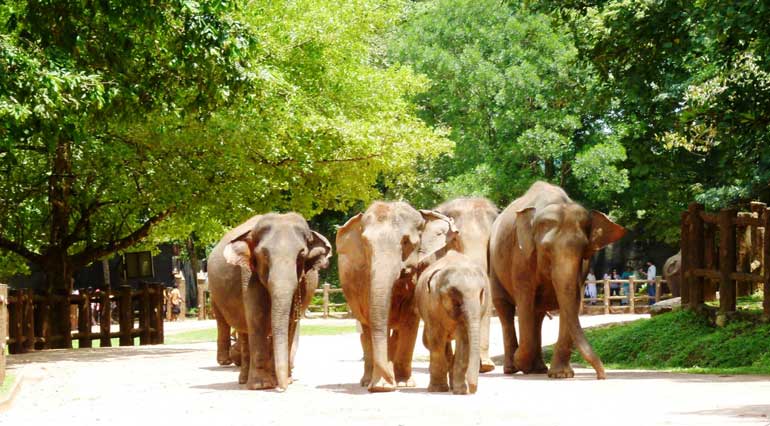
Protecting Sri Lanka’s elephant population
Mitigating the Human-Elephant Conflict and reducing the alarming rate at which elephants are currently being killed (about four per week) requires addressing various aspects of the problem simultaneously without resorting to stop gap, piece-meal solutions, asserts Srilal Miththapala.
In an interview with Daily FT, the passionate wildlife enthusiast, untiring advocate of conservation of wild elephants and experienced tourism professional points out that such a major multi-faceted campaign to address the HEC will need State patronage and leadership, together with a strong private sector partnership.
“Until there is a will from the Government to handle the HEC as a top priority in a holistic manner, I am afraid nothing much will happen, and we are doomed to see our wild elephant population eventually dying off,” he warns.
Following are excerpts:
Q: Elephants gather in Minneriya during the dry season due to the relative availability of water in the area. Are there signs that this pattern is being (or will be) disrupted due to climate change and more intense bouts of drought? If so what effect will this have on the park and on the elephants?
A: So far there has been no appreciable change to be noticed, even though there have been some changes in the weather patterns. The most critical element in this annual phenomena is the natural ebb and flow of the reservoir annually. Just as much as the reservoir getting filled during the rainy season is important, the gradually drying up of the reservoir during the draught is also important.
When the water recedes it leaves behind fertile, moist soil where lush grass quickly sprouts, which is good nutritious food for the wild elephants. So apart from changing weather patterns and other natural causes, if the reservoir is in any way artificially filled by channelling water from other sources for additional storage for irrigation purposes, it will affect this natural annual ‘ebb and flow’, resulting in disastrous consequences for ‘The Gathering’.
Q: You’ve written about the revenue making potential of ‘The Gathering’ but can Minneriya National Park handle an influx of tourists without deteriorating conditions for wildlife?
A: Yes I did estimate that ‘The Gathering’ is now worth about more than Rs. 1 billion annually. But I never did imply that it can go on increasing forever. There is a limit to the growth, and visitor influx has to be curtailed once there are signs of over-visitation and disruptions to the elephants’ feeding behaviour. I am told that this year the situation has reached unprecedented levels and that something needs to be done very urgently to curb over-visitation.
Q: Some environmentalists would argue that commercialisation of wildlife is categorically wrong and leads to abuse, as seen in Dehiwala Zoo or Yala. In your opinion, are profit and conservation compatible? What steps can we take to maintain a balance?
A: I think conservation and commercialisation can be compatible, but only if managed and balanced extremely carefully and ethically. The problem arises in maintaining this delicate balance. There must be no exploitation, no unethical use of captive animals, and above all they have to be well cared for and used for educational, and conservational purposes only.
Q: The Government has recently approved keeping a pool of around 35 elephants for peraheras – a solution that you have vocally supported in the past. Do you see this as a permanent solution or one step in phasing out elephants in religious and cultural activities?
A: Yes, I have supported this, and it has turned into a controversial issue now! So let me explain. Peraheras and elephants are a rich cultural and religious tradition in Sri Lanka, coming down from historical times. Having said that, traditions also need to change gradually overtime, as perceptions and the social environment changes… but not overnight. So I believe over a period of time, the custom of using tame elephants in pageants will, and should stop. Until then we need an interim solution.
We have a captive herd of some 80 odd elephants at the Pinnawela Elephant Orphanage or PEO as it is known, most of whom have lived all their life in captivity. There is no way these animals could be rehabilitated and released into the wild, because they will just not know how to fend for themselves. So what some of us have suggested is to handpick a group of suitable elephants, from this source (PEO), with the correct temperament, and physique, to be trained and used in pageants as an interim measure. The orphanage could earn valuable income which can in turn be used for upkeep and improvement of its facilities.
As time goes by, if the human elephant conflict is managed and mitigated well, there will be fewer orphaned elephant calves from the wild, and ‘input’ to the PEO will reduce, and gradually such elephants available for ‘pageant duty’ will also reduce. Hopefully by that time people would have realised that having hundreds of elephants in pageants is not viable option, and we may see peraheras with just a few customary elephants in the procession, together with one with special characteristics to carry the relics.
Q: On what basis do you think these elephants should be selected and how should their numbers be replenished over the years? Furthermore, how do we ensure the physical and mental wellbeing of elephants who will be driven around the country and exposed to loud festivals on a regular basis?
A:As indicated earlier, they should be handpicked to ensure that only good, healthy individuals with the correct docile temperament are chosen. They should each have a dedicated fulltime mahout, who will ensure that the animal is properly transported, looked after and managed during such pageants. Proper transport facilities should be provided as a part of the hiring package offered by the PEO, and at all times the PEO should be able to monitor the elephants. There could be roster in place to ensure that some animals are not overused. Of course all this requires very strict guidelines and monitoring, which in itself is another challenge.
Q: Recently the issue of starving elephants has come up. What are some of the driving factors for this and what can be done in the short and medium term to address this problem?
A:I think you are referring to the issue brought up recently at a talk about elephants in wildlife parks being malnourished. This problem actually stems from the mismanagement of National Parks and alienation of elephants from other forest areas. Contrary to what many people believe, elephants are not particularly fond of heavily forested areas. They prefer scrub grass lands and other secondary vegetation. When they are confined to National Parks, and when translocated elephants from other areas are also introduced or herds driven into the parks, without any consideration of carrying capacity, these food sources dwindle and the elephants slowly start getting malnourished.
Large-scale proper management of the flora of the park has to be carried out in a symmetric manner to help re-generate these food sources that the elephants need. A prime example of this is the Uda Walawe National Park (UWNP), which had one of the best thriving and healthy populations of wild elephants in Sri Lanka. Overcapacity has gradually eroded the environment and food sources in the park, and with no interventions to stimulate re-growth of the eroded grassland, it is now beginning to show, with several emaciated looking individuals being sighted now.
Over 65% of the wild elephant population of the island live outside protected areas, which often have much richer and nutritious food sources. The easiest ‘solution’ to the HEC in the name of conservation is to drive these elephants into the parks, further aggravating the problems within the parks… when actually the need is to manage these animals outside the protected areas itself.
This is a good example to show that the HEC cannot be solved by a few quick-fix solutions. There has to be a management plan for these peripheral areas, many of which do not come under the purview of the Department of Wildlife Conservation, but under the Forest Department, which then opens out complex issues of jurisdiction and responsibility.
Q: Finally, do you feel the tide is turning when it comes to elephant conservation efforts? Is Sri Lanka progressing in terms of preserving if not growing its elephant population? What are some of the policies and factors responsible for this?
A: Unfortunately I do not think the tide is turning at all. There is still no cohesive and holistic approach to tackle the Human Elephant Conflict (HEC), with only typical ‘kneejerk’ responses to problems. Take for example the recent incident where four elephants were knocked down by a train and killed. The immediate solution is fitting infra-red cameras on trains. This problem has been discussed so many times before, analysed and solutions suggested.
There are a whole range of issues which have to be addressed here. The attitude of the engine drivers, the speeds of the trains and stopping distances, visibility around bends and line of sight, etc. I know that Dr. Sumith Pilapitiya travelled on a train several years ago to see for himself the issues and understand the complexities. What a few us concluded was that no ONE solution would work, and that there needed to be a multi-pronged, cohesive solution, addressing both the hard and soft issues.
Similarly mitigating the HEC, and reducing the alarming rate at which elephants are currently being killed (about four per week) requires addressing various aspects of the problem simultaneously, in a cohesive, focused, organised sustained manner, without resorting to stop gap, piece-meal solutions. Such a major multi-faceted campaign to address the HEC will need State patronage and leadership, together with a strong private sector partnership.
So until there is a will from the Government to handle the HEC as a top priority in a holistic manner, I am afraid nothing much will happen, and we are doomed to see our wild elephant population eventually dying off. –
Source : 29/08/2016 Dailly FT http://www.ft.lk/article/564056/Protecting-Sri-Lanka-s-elephant-population#sthash.oNgiT8C3.dpuf

The trumpet has sounded, at judgment we stand
On the railway track last week in Chettikulam there was a horrible elephant tragedy which needs to be a trumpet call as to how serious Sri Lanka is in its commitment to protecting and promoting biodiversity — the world environmental theme for this year.
On August 18, three baby elephants and a mother elephant were killed when they were hit by the Mannar night mail train heading towards Colombo. Reports say a herd of about twenty five elephants had attempted to cross the railway track and seven elephants were hit by the train which was apparently running faster than the speed permitted in such areas where engine drivers have been told to go slow because elephants may cross the track. Three mutilated bodies were found around the same place while fourth had been dragged for about 400 metres along the track. Villagers say three other injured elephants had run into their jungle homelands.
With last week’s slaughter the number of priceless elephants killed by trains this year has risen to 11. Environmental investigators say that elephants killed on rail tracks are mainly those deprived of both homelands and food and thus roam around just to survive in the conditions that wickedly selfish people have created for them.
In a report published in the
yesterday out investigative journalists pointed out how selfish people had grabbed the habitats of the elephants — the priceless treasures and long time sacred kings of our jungles. Therefore it is not surprising that the fight for space has become a key factor in the human-elephant conflict, and it has tragically led to the deaths of about 200 elephants every year.
Marauding elephants also claim the lives of about 50 people annually, mainly by roaring and raging through villages built near their habitats. According to the latest census the number of Sri Lankan elephants has drastically dropped to about 7,000 compared to about 12,000 some hundred years ago. Obviously the elephants cannot provide a solution to this crisis. The government and the people especially movements committed to the conservation of biodiversity need to act urgently and effectively to find the solution and save our precious elephants from possible extinction.
As for elephants killed on rail tracks, the Railway authorities have said they have a plan to install thermo-cameras where through the heat emitted by the elephants, the driver would get a warning.
Jayantha Jayewardene, Managing Trustee of the Biodiversity and Elephant Conservation Trust, says elephants panic when they hear high speed trains. By tooting the horn from a distance the elephants are alerted and can move away. Mr. Jayawardene says, sometime ago the Wildlife Department deployed an official in the train driver’s cabin to prevent the driver getting drunk and being careless. But eventually it was found that both were getting drunk and the victim was the elephant.
Deadly drunken jokes apart, for a long-term solution the government needs to move faster than the drunken driver’s train and strictly implement the laws on deforestation. World environment crusaders insist that in the battle against climate change and the destruction of the eco-balance and biodiversity, priority must be given to stop deforestation. The government must not allow any housing or other projects in habitats which belong to the elephants. Without such an eco-friendly policy and commitment to diversity there cannot be sustainable development.
Besides the killing of elephants in train accidents or in the human elephant conflict there are also the heartless poachers. In Africa these wicked gangs are going after rhinos whose tusks are known to be more valuable than gold. In Sri Lanka also we see such poachers, many of them with political patronage. They kill the majestic tuskers to make a huge profit not realising or caring that they are destroying one of our great treasures.
We hope the government will act fast and firmly against all these elephant killers and make it clear to them that the trumpet has sounded and at judgment they stand.
Source 26/08/2016 Daily mirror : http://www.dailymirror.lk/114748/The-trumpet-has-sounded-at-judgment-we-stand#sthash.1pLv61gx.dpuf










